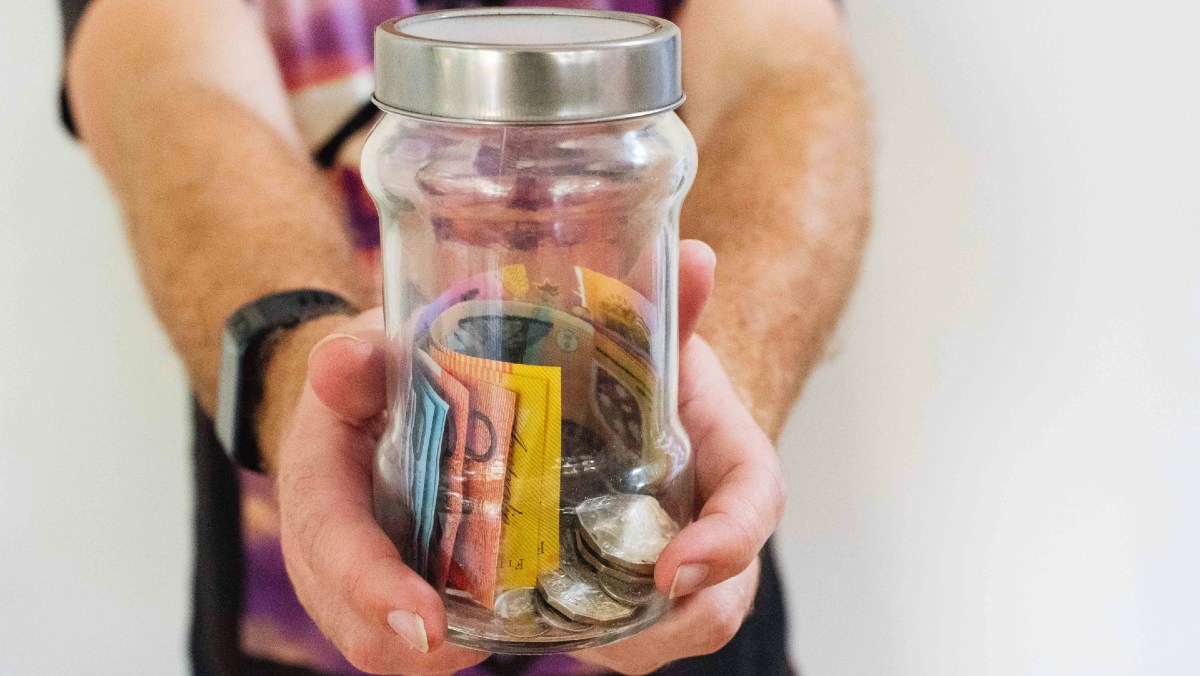The words ‘scrimp’ and ‘save’ are often lumped together when talking about finances.
That perhaps suggests the way to get on top of your money management is to put a plug on your spending, à la The Barefoot Investor.
But the suggestion to simply reduce your spending is often an unhelpful one, and doesn’t always account for the human psyche.
Max Phelps, mortgage broker, money coach, and author of Spending Fast and Slow, believes clamping down on spending – even splurging – could backfire for the majority of Aussies.
Speaking on The Barefoot Investor and its proposition of separating expenses into ‘buckets’, Mr Phelps told the Savings Tip Jar podcast, “I love the approach”.
“The mistake [The Barefoot Investor author Scott Pape] makes is assuming that after reading his wonderful book about how … he and his wife learned to be very frugal, that if you read his story you will become frugal too.
“The truth is, that only works for the small minority of people who are what I call ‘tight arses’.
“If you're not like that, which is the other 90% of the population, then the buckets are fine, just the flow of money needs to be different.”
Mr Phelps notes that most budgeting books argue that those looking to save need to simply limit their spending – advice that isn’t always helpful in the modern age.
Perhaps particularly due to the current cost of living crisis, within which rising interest rates and stubborn inflation has pushed many household budgets to the brink.
“You're always going to spend money when you can access it,” he said.
“The trick is [to limit] your access to money at the point of temptation.”
Strategies he recommends include severing the card link to your savings account and automating your finances to divvy out 'spending money' weekly.
How our brain can jeopardise our budgeting attempts
It might be obvious to note that the banking landscape has changed significantly over recent decades.
Gone are the days that a person’s employer would hand them a cheque, which would then be taken to a bank.
“When money was physical, you did a week's work, you got a week's pay, and everybody knew … that you didn't take your pay and put it in your pocket. That was financial suicide,” he said.
“You took your pay home and you hid it in envelopes, in jars, in boxes under the bed, and you walked back out the door with a little bit.”
Now, a person’s pay typically lands in their bank account each fortnight or month, and can be used from that moment to buy anything their heart desires.
Moreso, the vast majority of most Aussies' savings and personal wealth is generally available to them at any given moment. Likely with a few clicks on whatever device they’re reading this on.
And for most, that lure is simply too overwhelming to overcome, according to Mr Phelps.
“The banking system is not designed for humans, it's designed for robots, and if you're not one then perhaps you need to change your interaction with it.”
“Our brains are not designed to resist that kind of temptation,” he said.
“We tend to give into the things that we want … So the problem is, how do we change our interaction with [temptation]?”
As a mortgage broker, he gets an insight into the finances of everyday Australians and quickly realised, the majority have no idea what’s really going on in their bank accounts.
“When we ask [applicants] … aside from your rent, how much are your living expenses? People start off by going 'I've got my electricity, and my gas, and my phone, and my insurances’.
“They might come to a figure of, for example, $2,000 a month, and then they assume [their discretionary spending is] a percentage of that figure.
“They'll say, ‘$2,000 is what I know and understand, therefore in total, I spent $2,500’.
However, it’s commonly the case that discretionary spending outweighs essential spending, with Mr Phelps noting the above example might actual be spending upwards of $4,000 a month.
That likely comes from the combination of smaller transactions; $50 spent on UberEats and a few $5 coffees, for instance.
“Your brain works in two modes: The instant, quick decision making which you do based on a current gut feel, and then that considered decision making,” Mr Phelps said.
“Your brain is constantly trying to trick you into using the instant, intuitive decision making model, and even when you want to analyse where you went wrong … you look for a shortcut.
“So you look at your spending for the month, and you look for the big ticket item, and you go, ‘oh, it was the electricity bill’.
“No it wasn't! It was the 150 little ... items that came out that caused the problem.
“The electricity bill was part of the predictable $2,000 a month that you were going to spend anyway.”
Budgeting hacks that work, even for shopaholics
All that leads us to the message of Spending Fast and Slow, which Mr Phelps says is: “money needs to be hidden first, and spent second”.

Image: Max Phelps, courtesy of Max Phelps on LinkedIn
He suggests Aussies organise for their pay to be deposited straight into a savings account.
And not just any savings account. One in which they have no direct card access to, at an entirely different bank than the one their transaction account is with.
From there, they should automate the transfer of a set amount of ‘spending money’ to their transaction account each week.
That spending money will cover their regular discretionary expenses and (perhaps controversially) their groceries.
“The only thing that you're going to spend [that on] is the regular routine, we would include groceries, coffees, lunches, takeaways, anything you do week in, week out,” he said.
“Most of that money, apart from [that spent on] groceries, is wasted. It's going to be on little bits of rubbish that you will never ever value.”
Many savings accounts already do not come with debit cards, however many come with deposit criteria, and many savers risk missing out on bonus interest if they are depositing their pay and then depleting the balance through automatic payments.
For the things you do value, Mr Phelps suggests shifting money into a different transaction account on the first day of every month.
That money is designed to fund non-recurring expenses for the month -a birthday celebration or a weekend away attending a wedding, perhaps.
“Once you've spent that money, and it's gone, then you need to stop spending until next month” Mr Phelps said.
"But don't worry, there's money coming every week to make sure you can still buy a cup of coffee and still buy your groceries.
“That's the guts of the system.”
To learn more about Max Phelps’ money methods, listen to the full episode of the Savings Tip Jar podcast on Spotify or Apple Podcasts or check out his book, Spending Fast and Slow.
Image by krakenimages.com on Freepik



 Denise Raward
Denise Raward


 Hanan Dervisevic
Hanan Dervisevic
 Harry O'Sullivan
Harry O'Sullivan